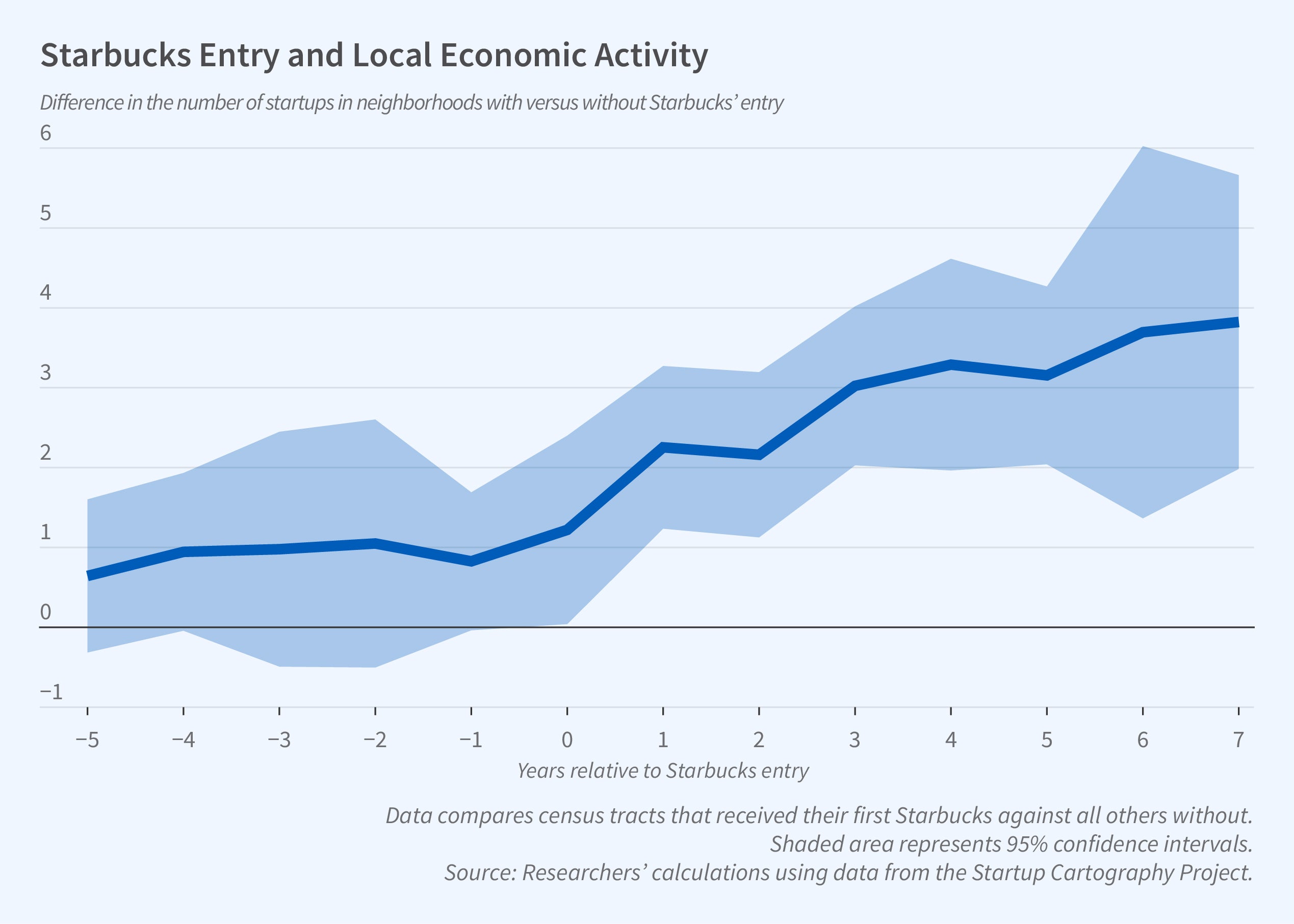“Third Places” Boost Local Economic Activity

Sociologists have argued that “third places” like cafés, which provide opportunities for individuals to socialize and exchange ideas outside of home and work, improve neighborhood life. But what about the relationship between such places and economic activity? In Third Places and Neighborhood Entrepreneurship: Evidence from Starbucks Cafés (NBER Working Paper 32604), researchers Jinkyong Choi, Jorge Guzman, and Mario L. Small use data on US business registrations between 1990 and 2022 from the Startup Cartography Project to examine whether the opening of a Starbucks in a neighborhood with no previous cafés affects local entrepreneurship.
The researchers hypothesize that Starbucks can boost entrepreneurship through two mechanisms: network building and signaling. Starbucks’s business model, inspired by European cafés, provides a social setting for individuals to congregate, in contrast to typical US coffee shops of the 1980s that focused primarily on selling food and drink. Additionally, the introduction of a Starbucks may signal that an area is poised for growth, a phenomenon real estate professionals term “The Starbucks Effect” due to the tendency of real estate prices to rise in neighborhoods close to a new Starbucks.
When Starbucks enters a neighborhood with no existing cafés, the number of new startup businesses increases. The effect is muted in neighborhoods with cafés.
Neighborhoods in which a Starbucks opened experienced an increase of 3.5 additional startups per year over the next seven years, an 11.8 percent increase, compared to those where a Starbucks had been planned but did not open. When comparing the Starbucks-opening locations to all census tracts without prior coffee shops, the effect decreases to a rise of 1.1 startups. The researchers also examine a partnership between Earvin “Magic” Johnson and Starbucks aimed at improving under-resourced neighborhoods. Johnson noted that Starbucks could serve as “the best hangout spot in town” and an “anchor to attract other businesses.” This partnership, which operated from 1998 to 2010, had a more pronounced impact, with Starbucks opened in connection with it spurring an increase of 4.3 additional startups per year.
Importantly, when Starbucks enters neighborhoods with existing coffee shops, there is no significant effect on entrepreneurship, suggesting the impact is specific to areas with few such “third place” institutions. The effect also decreases quickly with distance from the Starbucks location, implying a localized network mechanism.
The opening of non-Starbucks coffee shops in areas without existing cafés shows only small, fleeting effects on entrepreneurship. The researchers show that people spend more time at Starbucks than at Dunkin’ Donuts, which does not always offer sit-down coffee and tends to lack amenities encouraging extended stays. However, Caribou Coffee, a chain located primarily in Minnesota and Wisconsin, follows a third-place model similar to that of Starbucks and shows comparable effects. At Caribou Coffee, customers spend about as much time per visit as they do at Starbucks, further supporting the idea that coffee shops boost economic activity only when they effectively serve as third places.
When extending this analysis to other potential third places, the study finds no impact of bars on local entrepreneurship but a positive effect of restaurants. This finding is consistent with the networking mechanism, as sharing meals while conducting business activities is a common practice.
— Leonardo Vasquez
This work was generously supported by the Tamer Institute for Social Enterprise and Climate Change at Columbia.


